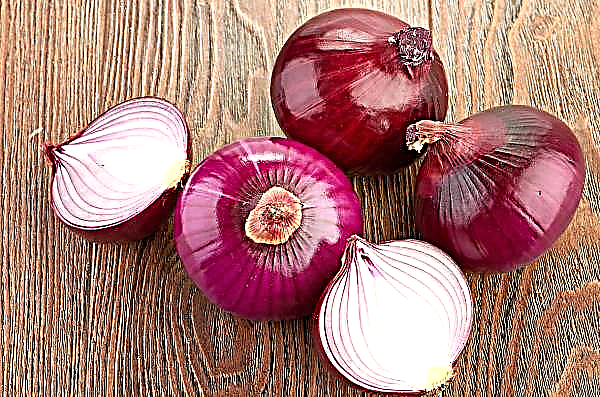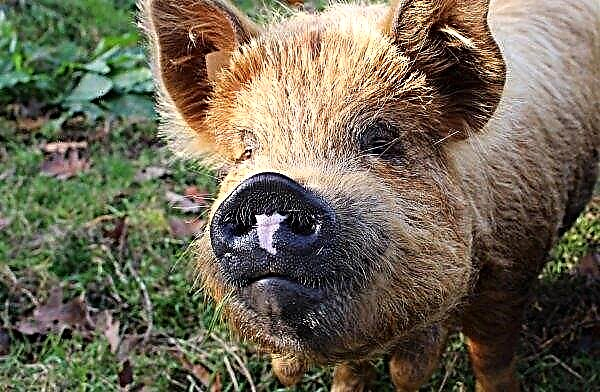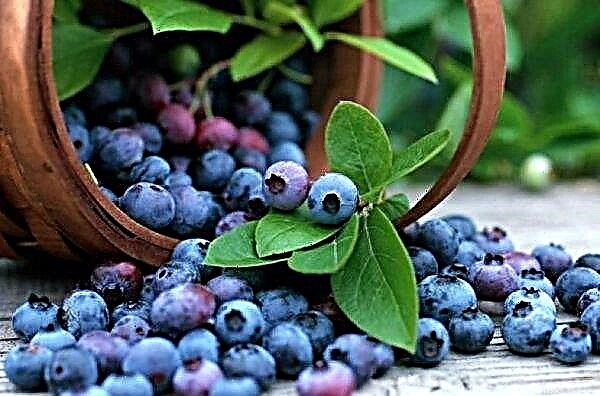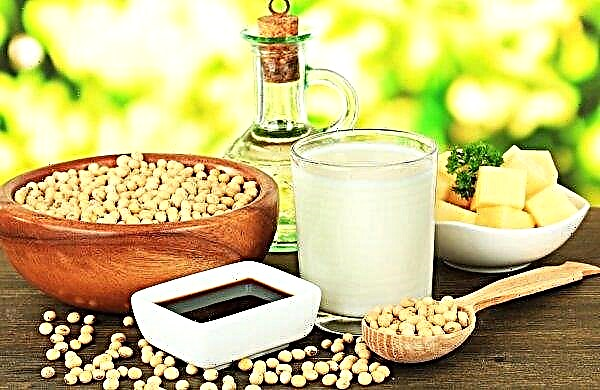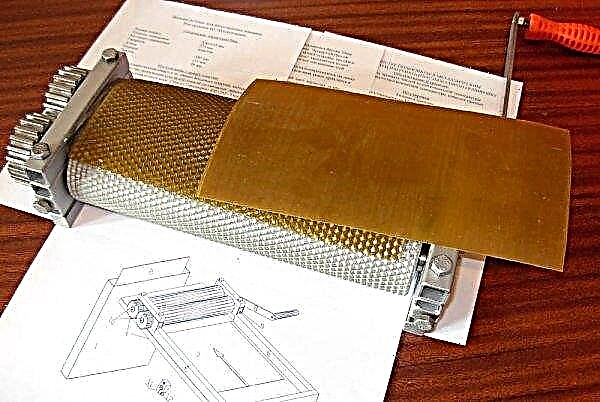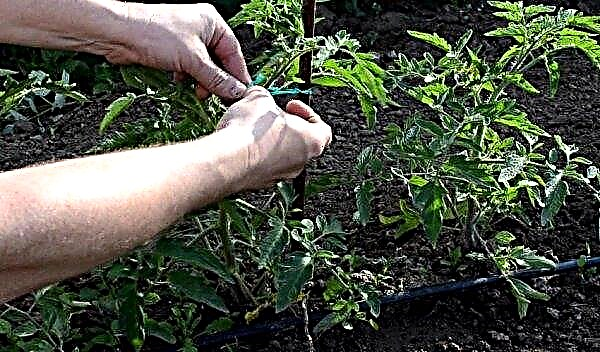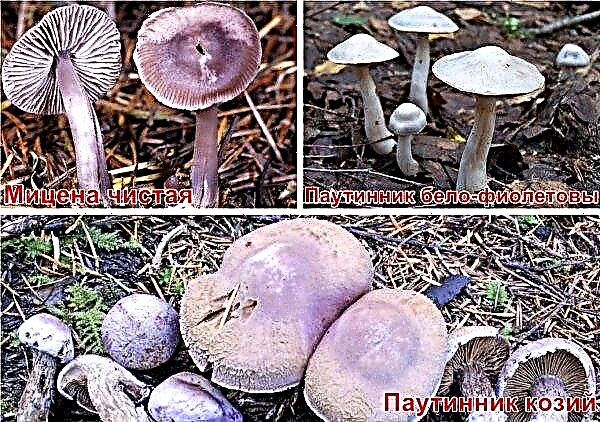Vitamin carrots (6) are one of the most popular varieties of this crop, which grows equally well both in the south and in the northern parts of Russia. The root crop has a lot of positive characteristics, but in order for them to fully manifest themselves, one will have to pay due attention to the issue of caring for it. What is remarkable about such carrots, and what aspects of its cultivation should be paid special attention to - read in this article.
History of the creation of the variety
The carrot variety Vitamin was bred by the breeders of the Research Institute of Vegetable Management, and the varieties Nantes and Amsterdam were the parent forms of the new variety. This happened back in 1969, after which during the last decades Vitamin carrots were successfully grown not only in Russia, but also abroad. Today, the variety is recommended for cultivation in Lithuania, Latvia, Belarus, Ukraine, Kazakhstan and all regions of the Russian Federation, with the exception of the North Caucasus region.
Did you know? A small cup of strong coffee can be replaced with a glass of freshly squeezed carrot fresh, which invigorates and tones the body no worse than a classic black drink.
Description and characteristic
Externally, the roots of Vitamin carrots are much like the fruits of other varieties of this vegetable, but if we study its composition more closely and look closely at the external features, we can note some specific characteristics of this carrot.
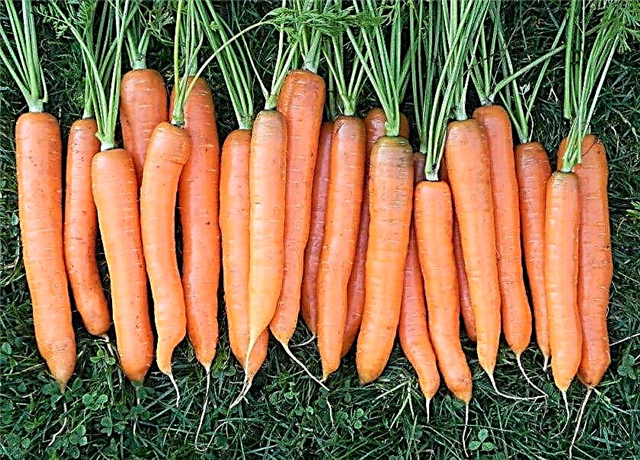 The variety is resistant to early stalking.
The variety is resistant to early stalking.
Root crop appearance and yield
The aerial part of the plant is represented by a semi-persistent green rosette of serrated leaves. The root crops themselves are cylindrical, obtuse, about 15 cm long and 4.9 cm in diameter. The flesh and core are orange in color, although the central part seems a bit lighter. The weight of the root crop is 61–164 g, which depends on the growing conditions and carrot care. Its taste is always appreciated by tasters, largely due to the high level of sweetness.
The average varieties of carrots also include:
Vitamin variety belongs to the group of varieties of medium maturity, so from 93 to 120 days from the moment of sowing to harvesting from the beds. The average yield is 4–10 kg per 1 m².
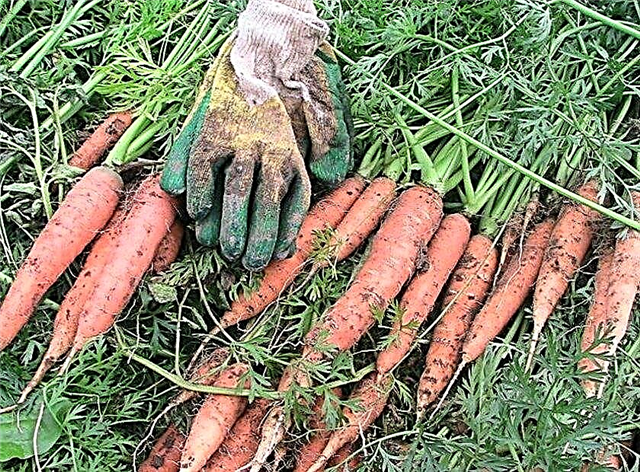 Vitamin 6 is suitable for gardeners whose plots are located in regions with difficult climatic conditions.
Vitamin 6 is suitable for gardeners whose plots are located in regions with difficult climatic conditions.
The composition of carrots and taste
The sweetness of the fruits of the described variety directly depends on the amount of fructose contained in the pulp, the proportion of which is 7–11% (for comparison, other varieties boast only 5% of the content of this substance). In addition, the vegetable contains no less useful beta-carotene: 17–22 mg for every 100 g of product (in other varieties it is not more than 9 mg).
Grade Immunity to Disease
Unfortunately, Vitamin carrots are not characterized by high resistance to diseases and pestsTherefore, when growing it, you will have to pay considerable attention to the prevention of fruit rot and the invasion of carrot flies. In an extreme case, if it was not possible to prevent the problem, it is important to cope with it in a timely manner, preventing mass distribution in the garden.
Positive qualities and possible disadvantages
The main difference between Vitamin carrots and other varieties is richer vitamin and mineral composition and rich color, but this is only the beginning in the list of all the positive characteristics of this plant.
- Other advantages of the vegetable include:
- high yields;
- the possibility of growing in different regions of the Russian Federation (even in the northern territories);
- comparative unpretentiousness in leaving;
- high palatability and the same indicators of juiciness;
- the possibility of long-term storage without loss of marketability and taste.
- As for the shortcomings, the most noticeable when growing root crops are these:
- low resistance to diseases and pests;
- tendency to crack ripened carrots.
Prevention and timely harvesting will help to solve these problems, so the cultivation of carrots can bring an extremely positive experience.
Features of outdoor cultivation and care
Vitamin Carrot Seeds can be sown immediately in open soil, with which begins the long process of growing it. However, so that the seeds germinate faster and the plant develops properly, it is important to properly prepare the planting material and choose the best time for sowing.
Optimal terms and conditions for sowing
Sowing Vitamin carrots can be done in early spring, soon after the snow melts. However, in severe winter frosts, it is advisable to wait until the soil warms up to + 7 ... + 8 ° C, which often occurs in mid-April.
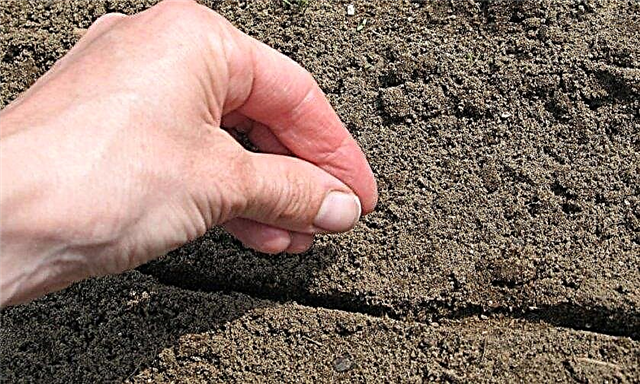
A few weeks before this point, it is worthwhile to prepare the substrate and arrange suitable beds, after having previously fertilized them with organic mixtures: for example, half a bucket of compost or the same amount of humus per 1 m². On heavy loamy soils, it is also worth using a small amount of wood ash.
Important! Fresh manure for fertilizing the beds is not suitable, it must be rotted.
Sowing seeds only in well-loosened and slightly moistened soilthat will contribute to easy germination of planting material. Clogged and dry soils will not give a good result and most likely the seeds simply will not germinate.
Video: Sowing Vitamin Carrot Seeds
The process of preparing seeds for sowing
Preparation of seeds of this variety for sowing is based on the same actions as in the cultivation of other varieties of carrots, and the main steps will be as follows:
- Soak in warm water for 1–1.5 days (it is better to put the seeds in separate gauze bags and constantly monitor their humidity, rinsing with warm clean water every 5–7 hours).
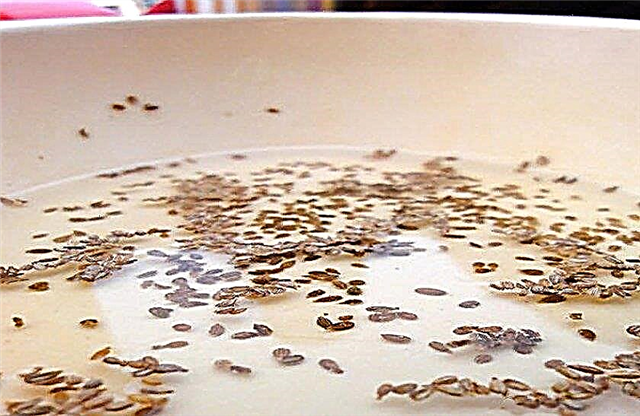
- Germination in a damp cloth in a warm room. After the first small sprouts appear on the laid seeds, they need to be dried a little, and then immediately planted on a bed, in previously prepared furrows.
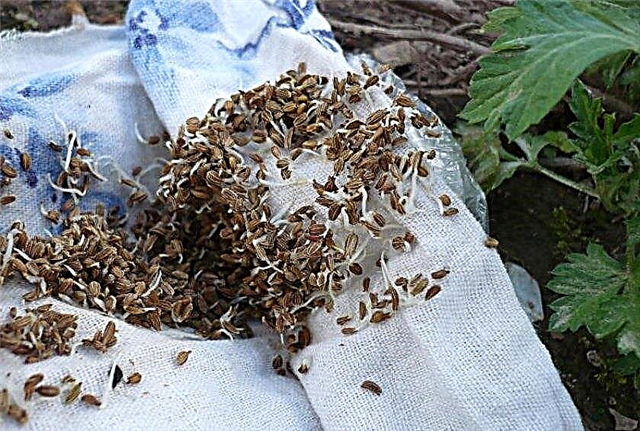
- Biostimulation seed growth using a solution of complex fertilizers (for example, sodium gutamate or Epin), in which the seeds are soaked for 10-12 hours. After the specified time, it remains only to dry the planting material (to a loose state) and you can sow it on the bed.
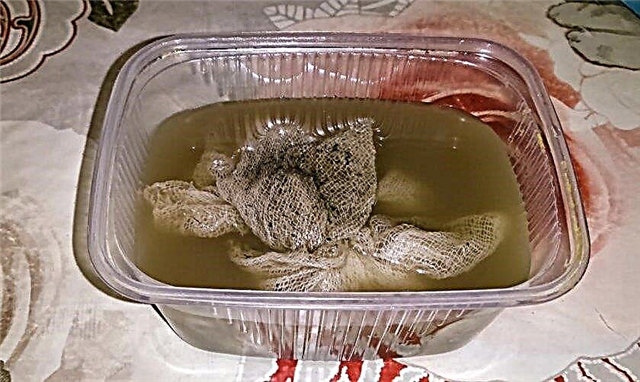
- Disinfection wet seeds (ungrown). It is carried out using a weak solution of potassium permanganate, in which they are kept for about 10-15 minutes or a solution of boric acid (1 g per 5 l of water), where the future carrots are left for a day.

- Hardening seeds to increase their resistance to frost. After soaking, the planting material is moved to a cool place, and then to the vegetable compartment of the refrigerator, keeping for 12 hours in both places. Hardening is relevant only for previously soaked and swollen seeds, and with sprouted this stage is worth skipping.
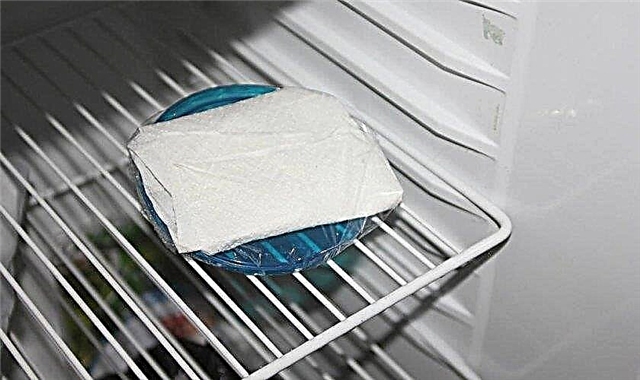
- Sparging - the most difficult of all the preparatory stages presented, since it requires an aquarium compressor. It is lowered into a container with liquid and monitored for uniform operation, providing the same uniform movement of seeds in the jar. On average, the process should last 18-24 hours, with a change in the fluid used after about 9-12 hours. After such treatment, seed germination begins already 6-8 days after sowing, that is, twice as fast as in the absence of treatment.
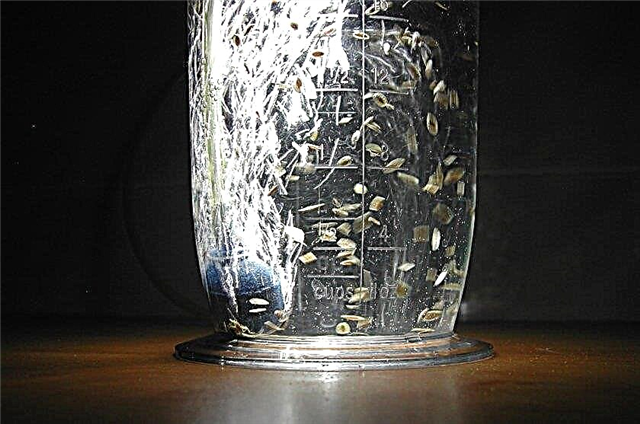
Of course, it is far from always possible to carry out all these preparatory measures, however disinfection of planting material is a prerequisite. Only in this way will you protect yourself from the problems associated with the mass damage of the formed root crops.
Irrigation and fertilizer application
Like adult plants, young vitamin carrot seedlings need regularly moistening and fertilizing the substrate in the garden. Watering is performed as the top soil layer dries using a fine spray (it is extremely undesirable to pour water with a jet so as not to wash the seeds from the soil). The day after the procedure is completed, it is useful to loosen the earth between the rows, which will contribute to active air exchange between the root system and the external environment.
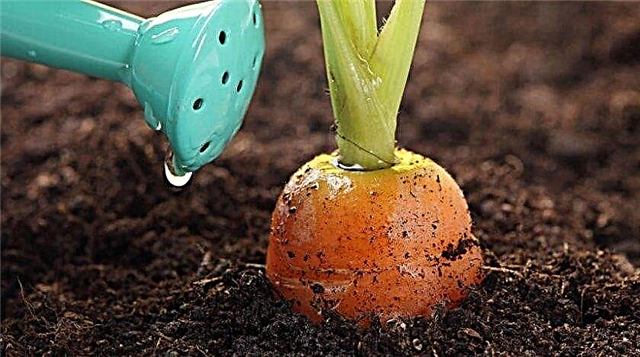
As for fertilizers, any kind of carrot responds positively to the introduction of calcium-potassium mixtures and Vitamin is no exception. When preparing the beds, you can use organic matter: For example, add 1 to 2 m² of sawdust soaked in urea and 5 liters of compost per 1 m². After emergence, it is useful to treat the bed with a mixture of 2 tablespoons of double superphosphate, 1 tablespoon of potassium sulfate and 1 teaspoon of sodium nitrate, pre-mixed with 0.5 l of wood ash. Increasing the dose of potassium fertilizer helps to increase the sweetness of the ripened root crop.
Important! If nitrogen-containing fertilizers were already used at the preparatory stage, then in the current season they should not be used. Excessive amounts of nitrogen in the soil lead to accelerated leaf growth and grinding of the valuable underground part of the plant.
Thinning and weed control
If you do not use a ribbon with seeds, then most likely you will have to thin out the emerged seedlings, as carrots often grow with a thick brush. For the first time this procedure is carried out after the appearance of two true leaves, leaving at least 1.5–2 cm of free space between adjacent seedlings.
Extra weak sprouts can be removed with tweezershaving preliminarily moistened the soil (following the procedure all the sprouts must be pulled vertically upwards, being careful not to tilt them to the sides so as not to provoke the formation of additional lateral roots and root curvature).

Second thinning It is performed approximately three weeks after the previous one, when the tops of carrots reach 10 cm. In this case, at least 6-7 cm of free space should be left between adjacent root crops. Carrots extracted from the soil can already be used for cooking. She should not be transplanted, as she is unlikely to be able to take root.
Anyway, thinning should be performed only in the morning, before the summer of the carrot fly. Smelling the smell of a vegetable, the pest will immediately be in the garden, so try to quickly remove the excess plants, immediately folding them in a compost heap and covering with a layer of wood sawdust (they drown out the outgoing carrot smell well).
Pest Prevention and Treatment of Variety Diseases
The main preventive measures when growing Vitamin Carrots are based on compliance with crop rotation requirements. Do not plant a crop after cereals, legumes, cabbage, tomatoes, cucumbers and onions, since all these plants have similar diseases and pests. In addition, when choosing a place for organizing the beds, you should avoid the areas where parsley, parsnips, caraway seeds, dill, and carrots grew last year. Ignoring the rules for the annual transfer of carrot beds is fraught with infection of plantations with a carrot fly, aphid, alternariosis and the appearance of other carrot problems.
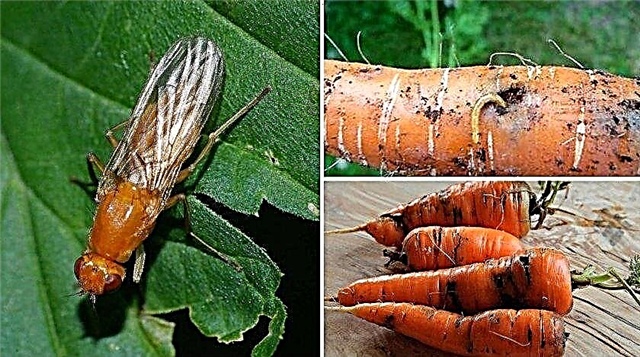
When organizing carrot beds this year, try to plant the crop as far as possible from the plantings of these plants, placing them on different sides of the site. Caring for root crops avoid thickening of plants and their overmoistening, since it is precisely such conditions that will be most favorable for the development of fungal ailments and rot of various origin.
Did you know? The usual orange carrot for us was not always like that. The first root vegetables found had a purple hue, later yellow and red varieties appeared, but root vegetables became orange only in the 17th century.
Features of harvesting and storage of crops
Harvesting carrots of the Vitamin variety variety begins immediately after its full maturation, that is, approximately 3.5–4 months after sowing the seeds. You can check the ripeness of root crops by simply digging a few copies, preferably from different parts of the garden, and breaking them. For harvesting carrots, choose only a dry and sunny dayso that, due to excessive humidity, the root crops extracted from the earth do not crack and lie well throughout the winter.
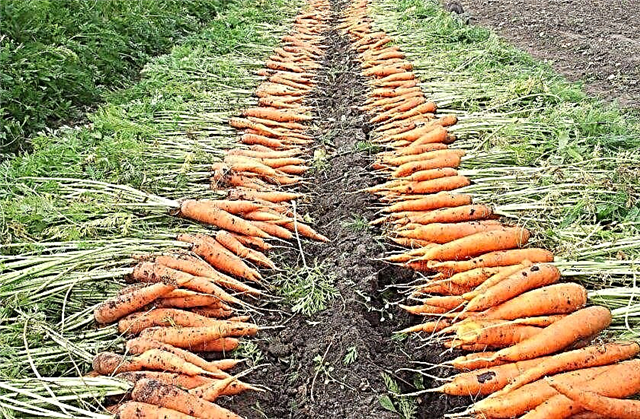 After removal from the soil, the carrots must be left to ventilate and completely dry the soil, so that it is easier to peel off the surface of the vegetable
After removal from the soil, the carrots must be left to ventilate and completely dry the soil, so that it is easier to peel off the surface of the vegetable
In the future, only carefully cut the tops (it is advisable not to damage the adjacent surface of the fruit itself) and place the carrots in the boxes, overlaying each layer with paper. An alternative would be storage of vegetables in containers with dry sandTrue, it is far from always possible to prepare a sufficient amount of cleaned and steamed sand.
With proper collection and compliance with all storage conditions of dug carrots, the fruits can safely lie all winterwithout cracking and without losing their taste and beneficial properties.
Vitamin variety is a really worthwhile option for growing in various regions of the Russian Federation, and if we take into account the comparative unpretentiousness of carrots to the growing conditions, it can be considered the easiest and most profitable way to get a good vitamin crop.
Network user reviews
Tasty juicy carrots
Since this year, we have completely switched to this variety of carrots. In the photo, carrots on August 1, she still needs to ripen. We just eat it now, and somewhere in September it will be much larger. A little bit we have an ugly shape. This is due to Siberian growing conditions and clay soil. It is stored well until spring. I completely agree with the characteristics of the Vitamin 6 carrot variety from the manufacturer. The carrots at harvest are large. It is delicious, very juicy. The color is bright orange, which indicates a high content of carotene. This is a plus. I don’t know how to check the high vitamin content in this carrot. About which the manufacturer wrote. But I think this is so. As for the germination of seeds. I can say for sure that germination is 100%. All seeds sprouted, and I had to break through the carrots. So I will advise. I personally really like the taste of this carrot and the juiciness.
ADVANTAGES: productivity, taste, stored almost until the end of winter
DISADVANTAGES: not detected
In our garden, carrots occupy one of the leading places in terms of planting area. We have been gardening for a long time and a lot of experience has accumulated. Varieties of carrots experienced a lot and stopped at three. One of them is vitamin 6. What attracted us to this variety? Firstly, a very high yield, even higher than that of some late-ripening varieties, with unsurpassed taste and even root crops (carrots are flat 12-15 cm. Cylindrical in shape and with a blunt tip). Secondly, the root crops grow completely in the soil and there is no need to hob so that the tips are not green. And thirdly, this is a mid-ripening variety that we use for summer and autumn consumption (salads, preservation for the winter, etc.), and this variety is not bad stored until almost the end of winter. So we really liked this variety. And so by the way ... we plant three varieties of carrots - early for bunch production, medium - already described and late for storage. All high yields!
Aleksa aleksa
https://otzovik.com/review_1392805.html







